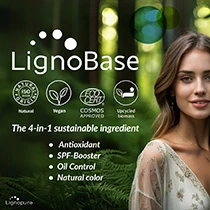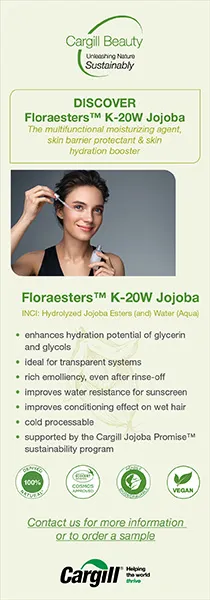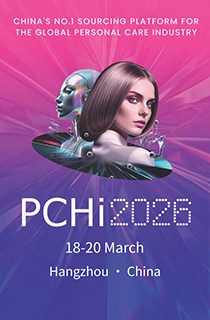Beauty-to-beauty loop: Pact Collective and Eastman advance colored PET recycling

23 May 2024 --- Pact Collective and Eastman qualify to use clean, multi-color PET waste from Pact members and consumers as feedstock for Eastman’s methanolysis technology.
Eastman’s technology addresses the mechanical recycling challenges of multi-colored PET at material recovery facilities (MRF).
The global specialty materials company’s methanolysis process enables the upcycling of this material into Eastman Renew materials — high-quality copolyesters and PET for the beauty industry that offer a quality on par with virgin materials.
“Pact works to identify the highest and best use for the material we collect through our collection programs, always starting with mechanical recycling when possible. Eastman’s technology gives Pact’s material that may otherwise be destined for waste-to-energy the opportunity for a better end of life,” says non-profit organization Pact Collective’s executive director, Carly Snider.
“Eastman may even help us keep this plastic material in circulation, creating more post-consumer recycled content that can be used in future beauty packaging.”
Tara Cary, Eastman’s cosmetics packaging segment manager, adds: “Eastman’s collaboration with Pact Collective has been a journey of shared vision and commitment. Our combined efforts ensure a more sustainable future for the beauty industry.”
“By harnessing our methanolysis technology, we are turning challenges into opportunities and leading the way toward a future where beauty packaging waste is a valuable resource, not a burden.”
Hard-to-recycle beauty waste
Eastman’s molecular recycling technologies are touted as suitable for managing the complex waste collected through takeback programs such as Pact’s.
Several companies, including Marks and Spencer, MAC Cosmetics, Le Labo, Lush, Kiehl’s and Innisfree, run takeback initiatives to collect used products or materials from consumers and reintroduce them to the original processing and manufacturing cycle.
 Eastman’s methanolysis process enables the upcycling of multi-colored PET into high-quality copolyesters and PET for the beauty industry.Methanolysis breaks down hard-to-recycle PET waste to its essential building blocks (monomers) that Eastman uses to create its “high-performance” materials.
Eastman’s methanolysis process enables the upcycling of multi-colored PET into high-quality copolyesters and PET for the beauty industry.Methanolysis breaks down hard-to-recycle PET waste to its essential building blocks (monomers) that Eastman uses to create its “high-performance” materials.
Eastman and Pact are working to validate more complex streams of beauty packaging waste for Eastman’s molecular recycling to reduce dependency on “less sustainable” options like waste-to-energy or landfilling.
Designing for end-of-life
In September 2022, Pact Collective and Eastman weighed in on how the cosmetics industry can achieve packaging circularity in conversation with Packaging Insights’ sister platform.
Pact Collective provides solutions for closing the loop on hard-to-recycle beauty packaging. It spearheads beauty packaging takeback programs at retail and consumer levels, which play a vital role in ensuring that packaging waste is managed in an environmentally responsible way.
For collectives such as Pact to recycle packaging mechanically, the waste material has to be clean and empty.
“The majority of our industry’s packaging is currently too small, too flexible or made of too many materials to be processed in our existing curbside programs,” Snider shared with us.
“We need to start designing for end-of-life by using the information gathered from our recyclers to source and design better packaging at the beginning of the supply chain (aka circularity).”
“Just because Pact can collect and recycle these materials doesn’t mean we should continue to design this way. Our goal is to move away from specialty programs like Pact and develop packaging that can be recycled curbside or reused.”
By Radhika Sikaria












